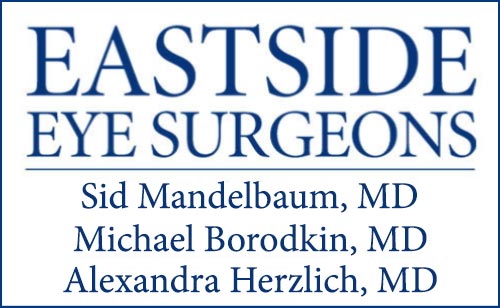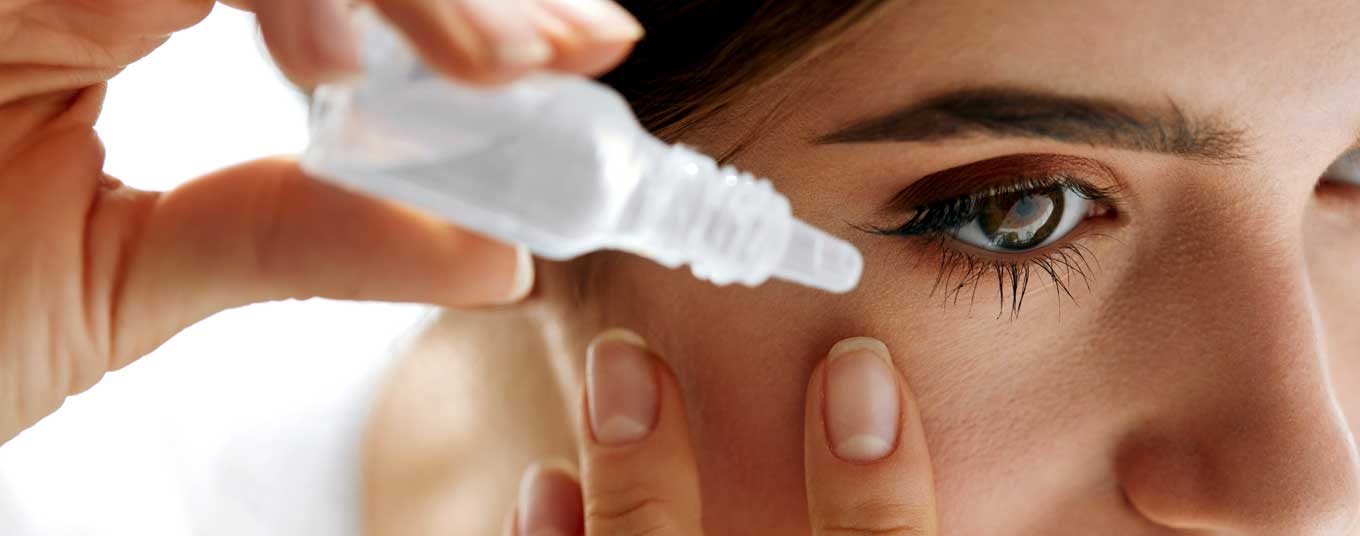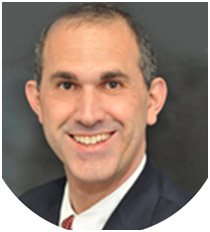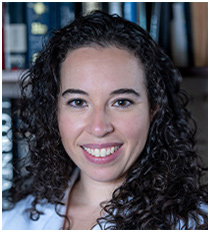Personalized & Effective Dry Eye Treatment in New York
Dry eye is a catch-all term referring to ocular surface disease. With ocular surface disease, there are abnormalities of the tear film. The tear film has three component layers. These layers coat the surface of the eyes, providing clear vision and protecting the delicate and sensitive eye tissues. Other names for dry eye include dry eye syndrome, dry eye disease and keratoconjunctivitis sicca. Dry eye does not necessarily mean your eyes are “dry,” but that there are signs and/or symptoms of dryness. Many people who suffer from “dry eye” have chronically watery eyes because of an imbalance in the systems that maintain the ocular surface. Dry eye means there is something wrong with your ocular surface.
Dry eye symptoms can be some of the most frustrating and uncomfortable day-to-day feelings. They can severely impact your quality of life. At Eastside Eye Surgeons, we strive to create a regimen that improves vision, comfort and quality of life, without being overly burdensome. We are accustomed to seeing patients who have come for a second and third opinion after potentially trying every possible treatment.
“Dry eye syndrome” is typically caused by an imbalance in the liquid film that covers the ocular surface. It may be caused by underproduction of tears or a chemical imbalance that prevents the tear film from functioning properly. Typical symptoms can include itching, burning, tearing, foreign-body sensation, redness, blurry vision or episodes of excessive tearing. Many factors affect the health of the ocular surface, including diet, co-existing medical conditions (such as thyroid disease, Sjögren’s disease or rheumatoid arthritis), medications, anatomical abnormalities, hormones and environmental conditions such as high or low humidity and temperatures.
At Eastside Eye Surgeons, we focus on properly diagnosing the underlying cause of dry eye and provide customized treatment with maximum benefit for each patient. We personalize each treatment to every individual and the specific cause of their symptoms. We believe that performing a thorough workup to initially establish the cause of the dry eye is a crucial first step prior to initiating treatment. We use specialized objective including tear breakup time, Schirmer’s test (amount of tear production) and inflammatory mediators in the tear film during this workup.
Treatment then involves addressing the underlying cause. We typically begin with the most conservative mild approach and slowly add on treatments to determine the minimal amount of treatments needed for the optimum effect. We usually begin with preserved and nonpreserved artificial tears (that come in individual vials), add thicker drops, including those with carboxymethylcellulose, add gel, ointment, prescription drops (such as cyclosporine and lifitegrast) and punctal plugs.
Punctal Plugs:
There are two puncta in each eye, one in the upper and one in the lower lid, and the puncta connect to the canalicular and nasolacrimal duct. The tears drain through this system. By occluding the puncta with punctual plugs, we are essentially blocking the drain and allowing the tears to stay on the surface of the eye and thus lubricate it for longer. This improves comfort and minimizes the amount of artificial tears needed throughout the day. Think of this as putting a stopper in the sink drain, to allow the fluid to stay on the surface of the eye longer. Punctal plugs are tiny (2x 4mm) inserts placed in the office at the slit lamp. The procedure is not painful at all, and you can continue your day-to-day activities afterward. There are two kinds: silicone plugs that are permanent (but may be removed) and collagen plugs, which are absorbed over about three months. If collagen plugs improve symptoms, we replace them. We typically start with two plugs and then proceed to four if there is a benefit. A more permanent solution includes electrocautery of the puncta, which permanently closes the puncta.
Autologous Serum Tears:
More aggressive treatments include autologous serum tears, in which a patient’s blood is drawn and centrifuged to separate the liquid and cellular components of the blood and is then turned into tears that are refrigerated for three months. Autologous serum tears are well-tolerated and are composed of substances that artificial tears cannot replicate, such as immunoglobulins, vitamin A, fibronectin and growth factors that promote corneal health. Current indications for autologous serum tears include Sjögren’s syndrome, dry eye, several types of keratitis as well as ocular graft-versus-host disease. They can be costly and time-intensive initially but can greatly help the right patient.
Custom Lenses:
There are several lens devices, such as scleral lenses and specifically the PROSE lens system that provides relief to certain patients. PROSE devices are made out of highly gas-permeable hard plastic that allows oxygen to reach the cornea. They are designed to create a space between the prosthetic device and the eye that is filled with sterile saline. The liquid remains in the reservoir, providing constant lubrication by bathing the eye in a pool of artificial tears.
Watery Eyes:
Another common condition is “epiphora,” or tears pouring down the cheek. This can be the result of various conditions, such as reflex tearing from ocular surface disease, tear hypersecretion, lid abnormalities or nasolacrimal duct obstruction. Reflex tearing is tearing in response to dry eye and an irregular surface. To determine whether there is an obstruction anywhere along the punctal, canalicular or nasolacrimal duct, we irrigate the system through each of the four puncta with saline solution. Obstructions can be partial, intermittent or complete. This procedure is safe and painless and is both diagnostic (it gives us information regarding the location and type of obstruction) and therapeutic (it can open the obstruction partially and improve symptoms). Treatments for obstructions include drops, procedures and oculoplastic surgery.
Finally, as we all spend endless hours on our phones, some of the screen time can negatively impact our eyes and contribute to dry eye.
Take the quiz here to see if your screen habits are causing eyestrain:
1. Do you spend over four hours a day on your phone or computer?
2. Do you take your phone or computer to bed with you at night?
3. Do you see glare when working on a screen that only resolves with blinking?
If you answered Yes to two or more of the above questions, you may be suffering from screen-related eyestrain. Read below for some tips on how to alleviate screen-related eyestrain.
- Keep artificial tears by your computer/desk while working.
- Every 20 minutes, look away from the screen and close your eyes for 20 seconds.
- Make sure that your computer screen is below your visual axis so that your eyes are looking down and not up. This ensures that your upper eyelids cover more of your corneas and your corneas are not exposed.
- When concentrating while working or focused in a conversation, remember to blink.
Do you have dry eye? Take the test below:
1. I have sensitivity to light.
2. I have burning/stinging of my eyes.
3. I have a gritty or scratchy sensation.
4. I have tearing/watering.
5. I have vision that improves with artificial tears.
6. I have vision that fluctuates with blinking.
7. I have pain/burning during the night or upon awakening in the morning.
If you answered Yes to three or more of the above, you are likely suffering from dry eye disease. Read below to find out quick and easy methods to treat this condition!
What type of dry eye do you have?
1. Do you wake up with:
a) dry eye
b) sticky eyelids
2. Do artificial tears:
a) usually help
b) hardly ever help
3. Do you have mucus on your eyelids?
a) no
b) yes
4. Cleaning my eyelids:
a) makes no difference
b) helps my symptoms
If you answered mostly “a” above, then you are suffering from evaporative dry eye. If you answered mostly “b,” you could have blepharitis or clogged oil glands causing dry eye symptoms.
Discover comprehensive care for dry eye by calling 212-650-0400 or using our convenient Request an Appointment form. Patients come to us from Scarsdale, Chappaqua and Manhattan, New York, Newark, New Jersey, Greenwich, Connecticut and surrounding areas.








